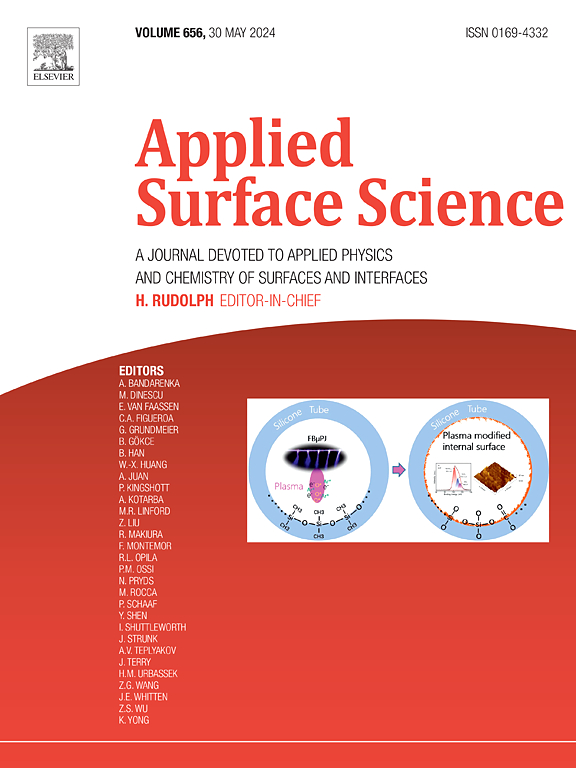揭示FeCoNiPdCu高熵合金的非均相结构:以电化学硝酸还原为例
IF 6.9
2区 材料科学
Q2 CHEMISTRY, PHYSICAL
引用次数: 0
摘要
最近,高熵纳米合金(HEAs)因其独特的高熵效应在各种潜在的催化应用中引起了极大的兴趣。然而,在以往的大多数研究中,单相 HEA 的成功制备主要是通过 X 射线衍射 (XRD) 和电感耦合等离子体质谱法来确定的,由于 XRD 提供的空间平均信息,往往忽略了次要次生相的存在。在这项工作中,我们以应用于电化学硝酸盐还原反应(NO3RR)的 FeCoNiPdCu HEA 为例,证实了微量的氧可以诱导形成 FeCoNiPdCu 高熵氧化物/FeCo 氧化物@NiPdCu 合金/FeCoNiPdCu HEA 三层异质结构,在应用电位为 -0.7 V 对 RHE 时,法拉第效率达到 95.16 %。此外,由于氧化物形成焓的不同,通过改变氧含量可以调整整个 HEA 的元素分布,从而进一步影响催化活性和选择性。我们的工作加深了人们对 HEA 结构的理解,并提供了对活性位点和相应催化机理的见解。本文章由计算机程序翻译,如有差异,请以英文原文为准。


Unveiling the heterogeneous structure of FeCoNiPdCu High-Entropy Alloy: A case study on electrochemical nitrate reduction
Recently, high-entropy nanoalloys (HEA) had attracted significant interest in various potential catalytic applications due to their unique high-entropy effect. However, in most previous studies, the successful preparation of single-phase HEA has been identified primarily through X-ray diffraction (XRD) and inductively coupled plasma mass spectrometry, often neglecting the presence of minor secondary phases owing to the spatially averaged information provided by XRD. In this work, using FeCoNiPdCu HEA applied to an electrochemical nitrate reduction reaction (NO3RR) as an example, we confirmed that trace amounts of oxygen induced the formation of a FeCoNiPdCu high-entropy oxide/FeCo oxide@NiPdCu alloy/FeCoNiPdCu HEA three-layer heterogeneous structure, achieving a Faradaic efficiency of 95.16% at an applied potential of −0.7 V vs. RHE. Moreover, by modifying the oxygen content, the element distribution across the entire HEA can be tuned owing to differences in oxide formation enthalpy, further affecting catalytic activity and selectivity. Our work deepens the understanding of HEA structures and provides insights into the active sites and corresponding catalytic mechanisms.
求助全文
通过发布文献求助,成功后即可免费获取论文全文。
去求助
来源期刊

Applied Surface Science
工程技术-材料科学:膜
CiteScore
12.50
自引率
7.50%
发文量
3393
审稿时长
67 days
期刊介绍:
Applied Surface Science covers topics contributing to a better understanding of surfaces, interfaces, nanostructures and their applications. The journal is concerned with scientific research on the atomic and molecular level of material properties determined with specific surface analytical techniques and/or computational methods, as well as the processing of such structures.
 求助内容:
求助内容: 应助结果提醒方式:
应助结果提醒方式:


